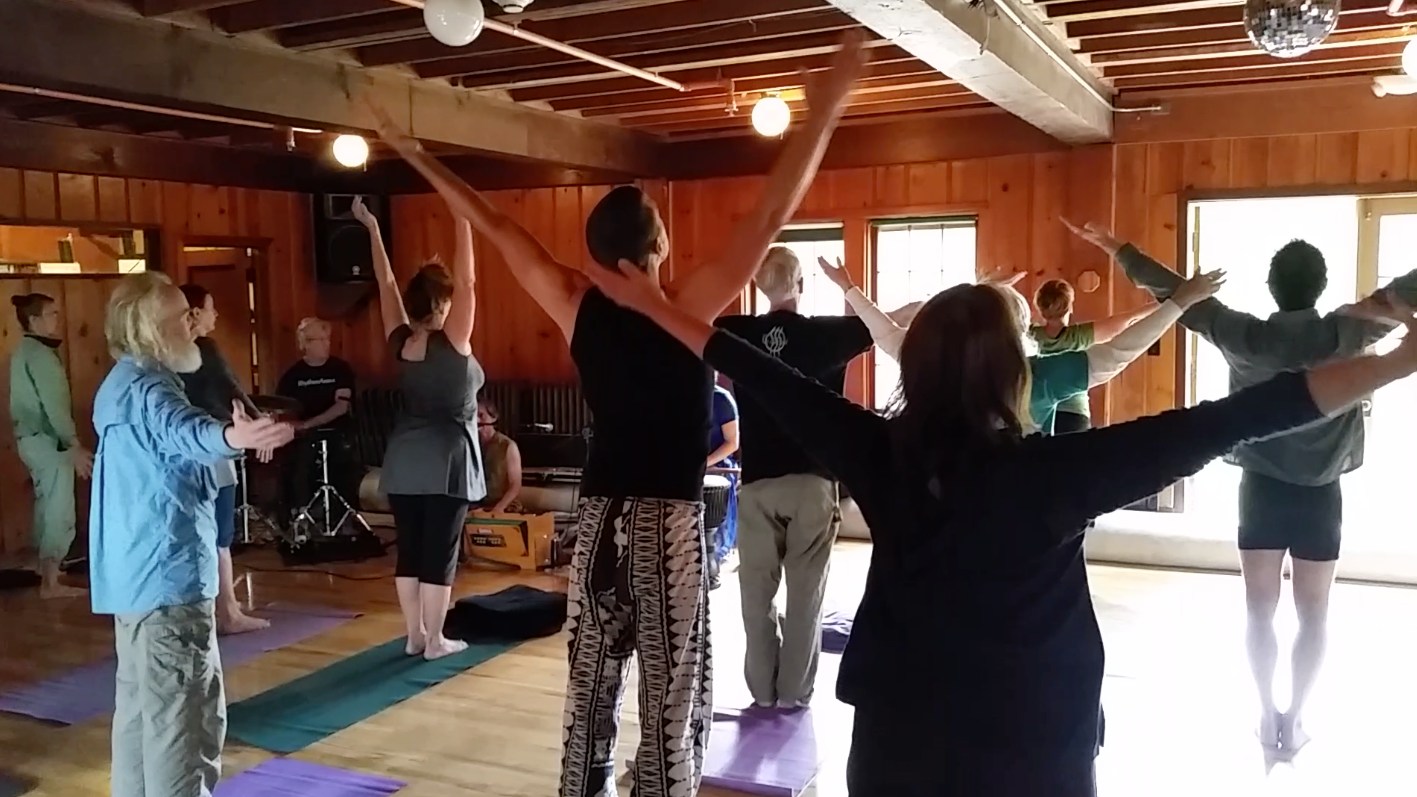If you’ve spent time with me over the last couple of years, there’s a good chance you’ve been amused or annoyed by my clumsy attempts to put the RhythmAsana experience into words. There’s something about the Deep Joy of RhythmAsana that transcends the verbal plane. And if it’s hard to describe the “what” of the RhythmAsana experience, it’s even harder to explain “why.” What causes the Deep Joy?
When I heard Dave Stringer talk about the neurophysiology of kirtan a few weeks ago, I wasn’t thinking about RhythmAsana. Like everyone else in the room, I was focused on kirtan—the call-and-response chanting often associated with yoga. But when he described the effects of kirtan on the human nervous system, I suddenly found myself listening to his words on two parallel levels. The kirtan musician in me appreciated his insights into the effect of group chanting on the brain. But my inner RhythmAsanator realized that he might just as easily have been talking about RhythmAsana.
I can’t hope to capture the depth and breadth of Dave’s wonderful presentation in these few paragraphs; if you want the whole story you’ll need to go to the source. But, at the risk of oversimplifying, I will share with you one small part of the talk that seemed particularly relevant to our journey.
As you may know, each of us has two nervous systems: The parasympathic nervous system, which is typically associated with inner peace and rest, and the sympathetic nervous system, which is associated with excitement.
In a typical kirtan, the group starts by chanting (and breathing) slowly together. Most people find this experience deeply peaceful, probably because they’re stimulating the parasympathetic nervous system. As a chant speeds up and the energy rises, hearts pulse faster and, in all likelihood, sympathetic nervous systems are activated. But because the group is still chanting and breathing together, there’s still a shared sense of inner peace. The end result, according to Dave, is that kirtan is one of the few human activities that activates both nervous systems simultaneously, producing a unique and powerful experience.
This theory may not (yet) be lab-tested and peer-reviewed, but it has a ring of truth to it. And it seems to apply to the RhythmAsana experience, too. We start by breathing and/or singing together; we move through gentle, slightly rhythmic yoga poses into group movements with more of a pulse, then into high-energy dance. Because of the gradual flow from restful to energetic, and because of the shared movements to a common pulse, we maintain a sense of deep peace and comfort while at the same time feeling waves of excitement and bliss. It’s an amazing space to explore together.
I don’t know whether the two-nervous-systems theory truly explains what’s happening here. It might be at least part of the reason we feel so good when we do RhythmAsana—and often, for long periods of time after we’ve moved back into our day-to-day lives.
I do know that there’s something profound about sharing space, time, and movement with others in this way is very special. I’m blessed to have the opportunity to do it with you.
—George
